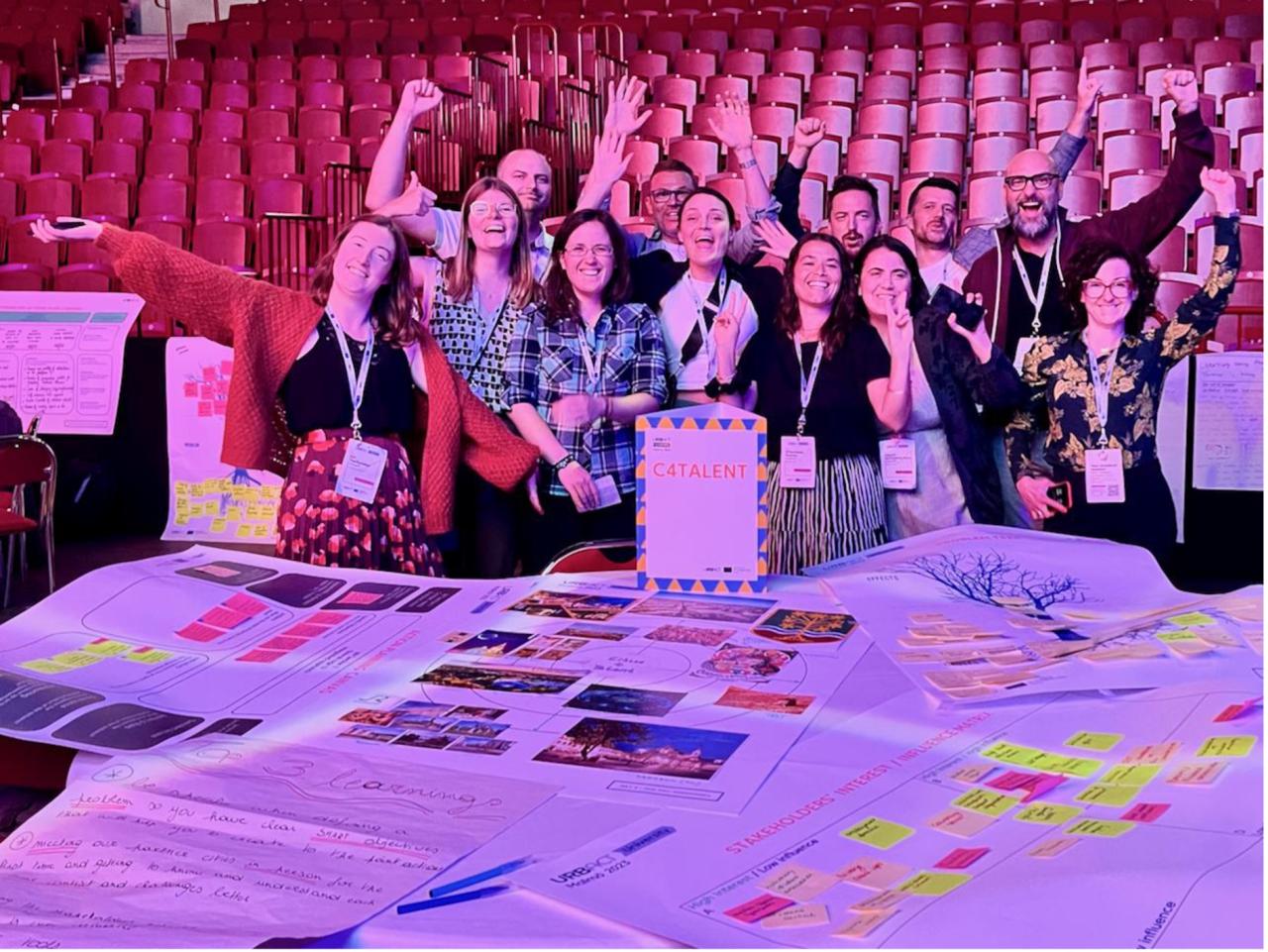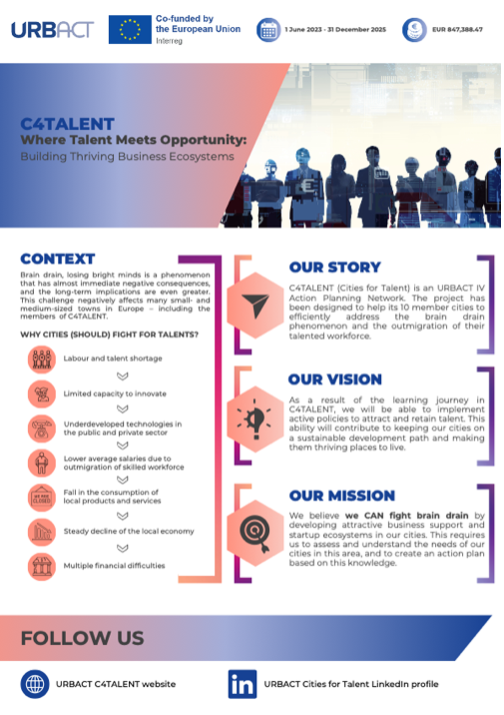Erik and Máté, two brothers born and raised in Nyíregyháza (HU), always shared a passion for gastronomy. After completing their secondary education, their career journey took them through prestigious restaurants in Budapest, London and Toronto, including Michelin-starred establishments. Erik rose to the position of sous-chef, while Máté progressed as a head waiter. Despite their success abroad, their ultimate dream was to open a restaurant in their hometown. Opting for a bold career shift, they returned to Nyíregyháza, leveraging their experience to establish a successful pasta bar.
Erik and Máté’s story reflects a dream shared by many EU citizens, to travel and work abroad. It’s also a great example of a city attracting and retaining talent; however, when it comes to small- and medium-sized towns, this is more the exception than the rule.
In this article, we look closer at Erik and Máté’s hometown of Nyíregyháza and nine other municipalities involved in an URBACT Action Planning Network. Together, the partner cities are developing strategies for talent and start-up friendly cities, particularly in smaller cities.
The battle for talent beyond the capitals
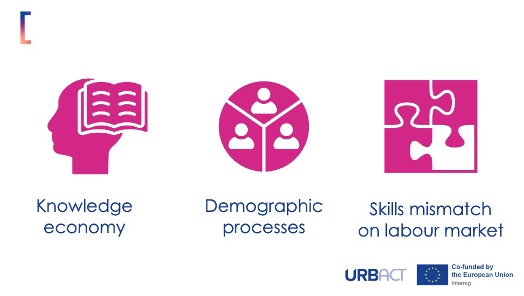
In the European Union, work opportunities have people on the move, with a growing exodus of young, educated individuals – particularly those with higher-education degrees – opting for careers in larger, more developed cities. The latest estimates claim over 10 million EU citizens of working age are living in another Member State. Freedom of movement is a fundamental right of all EU citizens, codified in EU law. The EU’s 2021-2027 Cohesion Policy reinforces this spirit at regional level to create a more competitive and smarter Europe. At city level, ‘jobs and skills’ are a key partnership area in the Urban Agenda for the EU.
The ease of movement within the EU has further contributed to the phenomenon of brain drain, whereby skilled individuals migrate to more economically vibrant areas. The consequences of talent loss are far-reaching, including labour/talent shortages as societies age and an increasing number of people retire from the workforce. In the knowledge economy, losing open-minded, educated people can hinder a city’s ability to innovate, which contributes to the slow decline of the local economy and, as a consequence, quality of life. This decline sets in motion a self-reinforcing cycle of outmigration.
Cities in Europe and around the world recognise the urgent need to implement policies to attract and retain talent. What do these policies look like? Are there other solutions to be tested?
The many faces of talent attraction and retention
Talent attraction and retention is a complex challenge for cities, and there are many elements at play influencing the choices of talented people – the two most important being jobs and lifestyle. Relocation decisions are often influenced by attractive job offers, better salaries, or favourable conditions for business growth – all work-related factors. However, if someone does not like the place, is not satisfied with the lifestyle factors, they will eventually try to find somewhere better. Indeed, in the age of remote or hybrid work many people – especially younger IT professionals, who can work from virtually anywhere – prefer to choose a place based on the quality of life.
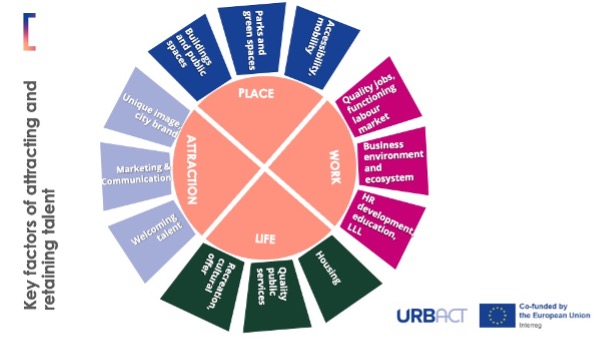
So, if a city wants to attract and retain talent, it needs to offer attractive jobs (and/or excellent conditions for running and developing a business) as well as the key conditions for a quality lifestyle. It’s worth noting that most of the cities currently focusing on talent attraction and retention are the capital cities and the big economic and knowledge centres that are already attractive even without active measures – leaving smaller towns with a more pronounced problem.
C4TALENT: a partnership with an URBACT history
Tackling this talent attraction-retention challenge is the nexus of the C4TALENT Action Planning Network, composed of 10 local authorities from across Europe: Nyíregyháza (HU); Alghero (IT); Alytus (LT); Centar Sarajevo (BiH); Piraeus (EL); Pula (HR); Roeselare (BE); Rzeszów (PL); Varberg (SE); and Vilanova i la Geltrú (ES). The key question they seek to answer together is: “How can small- and medium-sized cities contribute to attracting and retaining talent – by developing an attractive business support and start-up ecosystem?” Their ultimate goal is to learn from each other and establish good practices for developing talent and start-up friendly environments.
This requires a genuinely integrated approach to understanding and addressing various aspects of the wider context of talent attraction and retention; namely:
- the policy environment
- access to finance
- access to markets
- access to business support
- access to physical spaces
- the entrepreneurial culture.
The partnership is not without previous (URBACT) history: Nyíregyháza, Vilanova i la Geltrú and Piraeus cooperated in the TechRevolution Transfer Network, while Alytus, Roeselare and Rzeszów were part of TechRevolution 2.0. These cities teamed up again through C4TALENT – together with the new partners – to continue their URBACT journey, bringing in fresh aspects while building on what they already learned and achieved.
Working on the ground: common themes, different local challenges
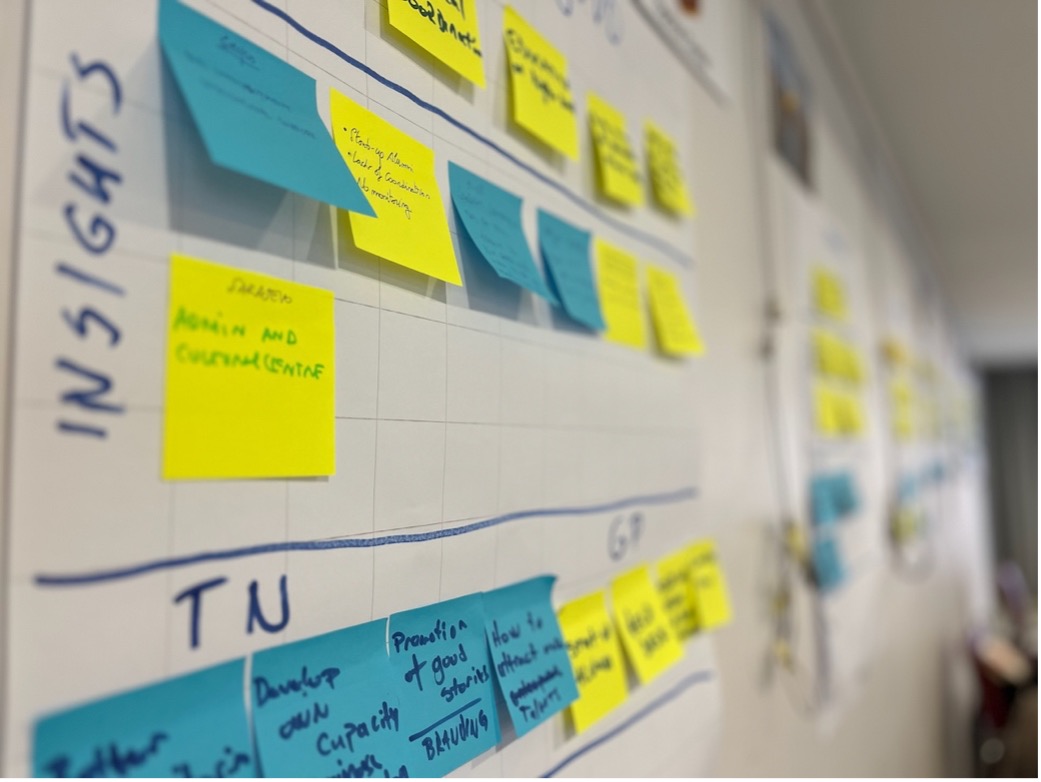
While C4TALENT partner cities work on a common policy theme, there is no one-size-fits-all solution to the variety of specific, local challenges related to talent acquisition and retention. To begin, some partner cities – like Nyíregyháza and Vilanova i la Geltrú – already have a virtual or physical space to serve as an ‘enterprise hub’ for recent graduates and start-ups. However, they need to shift focus, modernise and develop it to better address the specific needs of local entrepreneurs and adapt to new challenges. To tackle this, Vilanova i la Geltrú invited around 50 high school students to share their research interests and engage in entrepreneurship networking earlier in 2024. In a similar approach, Centar Sarajevo has established a start-up alumni association within the municipality’s Center for Excellence in Entrepreneurship.
In Alytus, funding has been secured for the Alytus’ Enterprise Hub and co-working space. The involvement of the local business community is critical to the success of this space, which is why the municipality has recently developed a concept and procurement documents. In Roeselare, the Belgian National URBACT Point organised a seminar in February 2024 on ‘How to finance my local development plan’ with presentations from local Belgian and French governments on their experience crafting local development plans.
In Varberg, efforts to connect local businesses and students have proven particularly successful. In November 2023, an ‘Energy Challenge Hackathon’ was organised at Campus Varberg with the Varberg Energi company. This was a win-win experience for both the students, who could test their knowledge and creativity for real-world impact, and Varberg Energi, who could use these new inputs and perspectives to upgrade their products and services.
The URBACT journey continues: from Planning Actions to building thriving business ecosystems
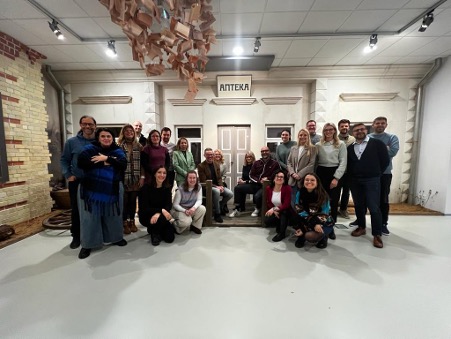
Evidently, European cities these days have to manage a host of challenges to attract and secure a talented workforce for the long term. The cities involved in the C4TALENT Network, which represent smaller municipalities, have united to address these challenges in their respective, specific contexts. At this stage, they have approved their specific roadmap and planning actions through to December 2025. Looking ahead to the next phases of their URBACT journey, C4TALENT partner cities hope to make stories – like those of Erik and Máté – no longer rare exceptions, but the norm!
Want to learn more about C4TALENT? Stay tuned for the latest updates and articles from the Network on their URBACT webpage! Follow the Network’s LinkedIn page to discover the unique advantages of each partner city in their ‘city pitch’ video series.
Want to read more about sustainable urban development? Check out the URBACT Knowledge Hub for stories and insights covering Mobility, Housing, Digital Transformation and other thematic areas.
This article was updated in August 2024. The original version was submitted by Béla Kézy on 05/12/2023

